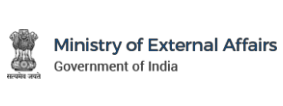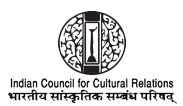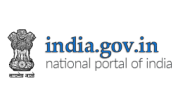Healthcare Experts from India and USA meet in Delhi
New Delhi
December 14, 2007
(Press Information Bureau)
Addressing the Indo-US Healthcare Summit today the Union Minister for Health & Family Welfare, Dr. Anbumani Ramadoss said that he was happy that the NRIs, specially physicians in the recent times are concerned about the improvement in the health care delivery in India. Dr. P.C.K. Nayar, President, MCI, Dr. Ajay Kumar, President, IMA, Dr. Hemant Patel, President, American Association of Physicians of Indian Origin (AAPI), Dr. Narendra R. Kumar, Coordinator, Indo-US Healthcare Summit, were present at the function.
The following is the text of the Health Minister's speech:
I learn that leading national and international experts and authorities on Diabetes, Infectious Diseases, including HIV/ADS, TB and Hepatitis, Mental Health, Women's & Children Health and Emergency Medicine have come together to review best practices on prevention, treatment and management of these conditions. I am told that for the first time the best minds from India and US has been brought together, which is truly an effort where experts from both nations will discuss, deliberate and share ideas on equal footing.
Let me at the outset give you a broad overview of the various achievements in the health arena during the last 50 years, be these in terms of demographic changes, epidemiological shifts or terms of infrastructure. Near doubling of life expectancy, fall in the crude death rate, halving of infant mortality and fertility rates, eradication of small pox and guinea worm, near eradication of polio, containment of malaria, reduction of leprosy and its elimination are some of the gains, which have been witnessed. These have been the outcome not only of the successful initiatives taken in the field of public health but other complimentary measures taken regarding safe drinking water, basic sanitation, adequate nutrition, education, rural development, clean environment, etc. Now climate change is also drawing our attention.
The overriding objective of economic and social development is to improve the quality of lives that people lead, to enhance their well being, and to provide them with opportunities and choices to become productive assets in society. In 1952, India was the first country in the world to launch a National Programme, emphasizing family planning to the extent necessary for reducing birth rates 'to stabilize the population at a level consistent with the requirement of National Economy'. After 1952, sharp declines in death rates were, however, not accompanied by a similar drop in birth rates.
The National Health Policy, 1983 stated that replacement levels of total fertility rate (TFR) should be achieved by the year 2000. While global population has increased threefold during this century, from 2 billion to 6 billion, the population of India has increased nearly five times from 238 million (23 crores) to 1 billion in the same period. India's current annual increase in population of 15.5 million is large enough to neutralize efforts to conserve the resource endowment and environment. Our population is 16 percent of the world's population on 2.4 percent of the globe's land area. If current trends continue, India may overtake China in 2045, to become the most populous country in the world.
Deteriorating environmental conditions are a major contributory factor to poor health and poor quality of life and hinder sustainable development. Poor environmental quality is directly responsible for around 25% of all preventable ill health in the world today, with diarrhoeal diseases and ARI heading the list. Other diseases such as malaria, schistosomiasis, other vector-borne diseases, chronic respiratory diseases and childhood infections are also strongly influenced by adverse environmental conditions. Acute diarrhoeal diseases have been recognised as the major cause of morbidity, under nutrition and mortality. Nearly 0.7 million children die every year due to diarrhoea. Respiratory illnesses are one of the leading causes of morbidity. Diagnosis of outbreaks and their control pose a serious challenge. The Government of India has initiated Integrated Diseases Surveillance Programme (IDSP) in the country, which is likely to enhance rapid response capabilities.
In our country, about one-lakh cases of viral hepatitis are reported every year through routine surveillance system. Studies carried out in antenatal mothers and blood donors in different parts of the country indicate that about 3-5% of India's population may be chronic carriers of Hepatitis B virus (HBV) whereas about 1.8% of the population is infected with Hepatitis C virus. While viral hepatitis E is responsible for most of the outbreaks of viral hepatitis in India, hepatitis B and C are much more serious as they can lead to chronic carrier state, chronic hepatitis, liver cirrhosis and carcinoma.
Since transmission of Hepatitis A and E is through faeco-oral route, IEC activities to promote personal hygiene, safe water supply and environmental sanitation that apply to control other enteric infections are being strengthened for control of Hepatitis A and E. Measures being taken to prevent Hepatitis B, C and D transmission include compulsory screening of all blood in blood banks for Hepatitis B and C as well as promotion of safe sex behaviour under the National AIDS control programme. Hepatitis B vaccine is now being integrated into the existing routine immunization programme gradually.
For any country to find it due place in the comity of civilized nations, the three most important indicators on the human development scale are: eradication of poverty, health-care and education. We have perhaps the largest force of technical personnel in the world. Progress, economic or otherwise, is sustainable only in an environment of equity and social justice. It is with this concept the National Rural Health Mission (NRHM) has been launched in 2005.
NRHM's Plan of Action includes, increased public expenditure on Health, reducing regional imbalances in Health, pooling resources, optimization of Health Manpower, community participation and ownership, operationalising CHCs into functional hospitals. 75 % of health services is provided by private sector. Private public partnership brings convergence of private sector interests and public sector goals. Aim is to optimally utilize and enable increased access to vast rural poor. Professional association's participation is envisaged in Mission steering group, Empowered programme committee, State and District health missions etc. Professional associations would understand the strategies under NHRM and actively associate with Govt. in implementation. The Mission is an articulation of the commitment of the Government to raise public spending on Health from 0.9% of GDP to 2-3% of GDP. It aims to undertake architectural correction of the health system to enable it to effectively handle increased allocations as promised under the National Common Minimum Programme and promote policies that strengthen public health management and service delivery in the country.
High maternal mortality (301/100,000 live births) is a major public health concern in India. It signifies that around 77 thousand women die every year due to causes related to pregnancy and childbirth. Under the NRHM (2005-2012) and the RCH Programme Phase-II (2005-10) the Government of India is actively pursuing the goals of reduction in Maternal Mortality by focusing on the 4 major strategies of essential obstetric and new born care for all, skilled attendance at every birth, emergency obstetric care for those having complications and referral services. The other major interventions are provision of Safe Abortion Services and services for RTIs and STIs. Govt. of India is operationalizing the PHCs for 24 X 7 services and also training the SNs/LHVs/ANMs in Skilled Attendance at Birth for essential obstetric care. Quality ANC includes minimum of at least 3 ANCs, 2 doses of T.T Immunization and consumption of IFA tablets for 100 days. The problem of Anemia is more severe during pregnancy, with 57.8% of pregnant women (15-49 years) being anemic. Under the programme for prophylaxis and treatment of anemia all pregnant and lactating women are provided with one tablet (containing 100 mg of elemental iron and 0.5 mg of Folic Acid) daily for 100 days.
Those who have severe anemia are provided with double dose of these tablets. Provision of 24 Hrs Delivery Services at PHC: Under RCH – II, 50% of the PHCs and all PHCs are being operationalized for providing 24 X 7 services by placing at least 3 -5 Staff Nurses and 1 Medical Officer in these facilities.
There is provision of Emergency Obstetric and Neonatal Care at First Referral Units (FRUs). To operationalize all FRUs (District Hospitals and CHCs), critical components such as manpower, blood storage units and referral linkages etc are being put in place. Training of MBBS Doctors in Life Saving Anesthetic Skills for Emergency Obstetric Care is being given. Flexibility has been given to the States for establishing referral linkages including referral transport between the community and health institutions, for which the States have launched their own innovative models. Janani Suraksha Yojana (JSY) is a safe motherhood intervention under the National Rural Health Mission (NRHM) under which cash is distributed to the poor pregnant women for institutional delivery. Under this scheme, ASHA/link worker facilitates pregnant women to avail services of maternal care and arrange referral transport.
NRHM is an effort to provide a full functional platform for health action with full community ownership at all levels – the village, the Sub Centre, the PHC, the CHC and the district level. With the rigorous efforts made, more than 4.5 lakh ASHAs and other community workers have been selected and untied funds for local health action have been made available to each and every health facility (Sub Centres, PHCs, CHCs) in rural areas. Sub Centres have become functional by using untied funds to meet their local felt needs. More than 10,000 Hospital Development Committees have been constituted and more than 21 lakh women have already been covered for support under the Janani Suraksha Yojana. By providing a platform for convergent community action, over 10 lakh Monthly Health Days have been organized at Anganwadi Centres and key vacancies of ANMs, Nurses and Doctors have been filled up by contractual appointments, based on local criteria.
Today the Non Communicable Diseases (NCDs), especially Cardiovascular Diseases (CVD's), Diabetes Mellitus, Cancer, Stroke and Chronic Lung Diseases have emerged as major public health problems, due to an ageing population and environmentally driven changes in behaviour. Current statistics on cardiovascular diseases (CVD) and stroke in India are incomplete. An increasing trend in CVD has been witnessed and has become the leading cause of deaths from non- communicable diseases. Surveys in India reveal that about 10 % of adults suffer from hypertension. The increase in cardiovascular disease prevalence and mortality rates is expected to continue in the coming years in the majority of countries of the Region. The number of deaths due to Ischemic Heart Diseases in India is projected to increase from 1.2 million in 1990 to 1.6 million by the year 2000, and to 2 million by 2010. The premature morbidity and mortality in the most productive phase of life is posing a serious challenge to Indian society and its economy. It is estimated that in 2005 NCDs accounted for 5,466,000 (53%) of all deaths (10,362,000) in India.
Health promotion is a key component for the prevention and control of NCDs. It must combine educational activities with policy interventions to provide a supportive environment. It is pertinent to mention that Health promotion for NCD control can be carried out with simple messages e.g. use of less salt & sugar, exercise, avoiding stress, tobacco & alcohol and increased use of vegetable and fruits. These simple interventions can prevent or delay many of the NCDs. National program for Diabetes, Cardio-vascular Diseases & Stroke is being launched shortly with pilot phase this year. However CVD, Diabetes & Stroke prevention and control facilities are available in the health care delivery system under the NRHM. A health education drive regarding lifestyle disorders for parliamentarians was carried out last year, which was highly appreciated. I have requested the chief ministers of various states to initiate similar campaigns in their respective regions.
Asthma is one of the common chronic illnesses. Recent reports shows about 4-19% prevalence of asthma in school- going children in India. Environmental factors, including increasing exposure to pollution, allergies, environmental tobacco smoke and sedentary life style have been identified as risk factors for asthma. The incidence of allergy abroad is much more, probably double that of ours. It is now believed that eating junk food and artificially coloured and flavoured and preserved items at modern fast food joints cause allergies. I believe that we must avoid junk food. There is no vertical program for prevention and control of Asthma & allergies.
Respiratory problems are caused by smoking. The Indian Parliament has passed the Cigarettes and other tobacco products bill 2003 in April 2003 and it became an Act on 18 th may 2003. Rules were formulated in 1st May 2004 and are being vigorously implemented throughout India. It is hoped that Tobacco use would reduce.
India's economy has been growing at a moderate 5.5%- 6% since the 1980s, breaking from its 3.5% growth witnessed during earlier decades. While India's real per capita average growth during 1970-2000 has been 2.4% per annum, interstate inequality is a cause for concern.
Health care delivery in India is multifaceted, consisting of diverse practitioners and institutions, mixed ownership patterns and differing systems of medicine. The last several decades have seen significant improvement in the health system, with strides being made in the achievement of demographic, infrastructural and epidemiological indicators. However, deficiencies persist with regard to access, affordability, efficiency, quality and effectiveness of health services. The utilization data indicates that the private sector pre-dominates in terms of provision of care, with more than 80 percent of ambulatory care and more than 55 per cent of inpatient care being sought in the private sector. At the midpoint of this opening decade of the 21st century, we are confronted with the emergence of new or newly recognized pathogens, the recurrence of well-characterized epidemic-prone diseases, and the potential for accidental or deliberate release of biological agents. Recent years have seen a global increase in the number of outbreaks (like Cholera, Ebola, Plague, Meningitis, SARS and Avian Influenza), the pathogens involved and an increase in the importance of outbreaks. Contributing factors include poverty, widening development gaps, weak public health infrastructure, urbanization, new use & development of biological products, environmental change & degradation, and globalization of travel & trade.
Now, I would like to give the successful example of Revised National Tuberculosis Control Program (RNTCP). Based on the WHO recommended strategy of Directly Observed Treatment, Short course (DOTS) one billion population is covered. Over 4 million patients are put on treatment under DOTS to date. More than 1 lakh patients are put on treatment under DOTS every month.
Vector borne diseases, viz., malaria, filaria, kala-azar, Japanese encephalitis, dengue are responsible for considerable sickness and infirmity. Despite unprecedented medical and technological advancements and improvements in health care services, considerable morbidity and mortality still occur leading to a lot of concern and crisis in India, including creating impediments in the path of socio-economic development. The National Vector Borne Disease Control Programme (NVBDCP) is an umbrella programme for prevention and control of vector borne diseases viz., Malaria, Filariasis, Kala-azar, Japanese Encephalitis, Dengue/Dengue Hemorrhagic Fever (DF/DHF) and Chikungunya. These diseases pose immense public health concern and are major impediments in the path of socio-economic development Chikungunya fever has reappeared in the country after almost 30 years. During the year, total 13.9 lakh suspected cases were reported from 15 states out of which 1997 cases were serologically confirmed. A comprehensive, long term Action Plan for prevention and control of Chikungunya has been prepared and disseminated to the states. Special Programme for elimination of Kala-azar has also been initiated with a focus on nine endemic districts of Bihar.
The first HIV positive case in India was detected in 1986. Recent estimates suggest that there are about 2.5 million HIV positive persons in the country. In order to reiterate the Government's commitment to prevent the spread of HIV and to facilitate a strong multi-sectoral response to combat it effectively, a National Council on AIDS headed by the Prime Minister of India provides the leadership at the national level. World's largest mass mobilization drive, the Red Ribbon Express was launched at New Delhi's Safdarjung Railway Station, on the World AIDS Day few days back on 1 st December 2007. Seven coaches carrying HIV prevention messages will traverse over 27,000 km making 180 halts, covering 166 districts across the country, reaching out to crores of people in over 50,000 villages for scaling up ground level mobilization activities. Anti retro viral therapy is available free to all who need it. You must be aware of NACO activities therefore I am not elaborating on that.
Severe mental disorders that include schizophrenia, bipolar disorder, organic psychosis and major depression affect nearly 2% of our population. This population needs continuous treatment and regular follow-up attention. Close to ten million severely mentally ill are in our country without adequate treatment by this estimate. More than half remain never- treated. Lack of knowledge on the treatment availability & potential benefits of seeking treatment are important causes for the above. Less than one psychiatrist is available for every 3 lacs population. The psychiatrist / population ratio in rural areas that account for 70% of country's population, could well be under one for every million. An evaluation of the NMHP was undertaken in 2003 and the programme was restrategised to incorporate the changes to a multi-pronged programme for effective reach and impact on mental illnesses.
The Plan of Action to implement National Programme for Control of Blindness during the X Plan has been prepared in the line with Global initiative "Vision 2020: The right to Sight". Revised scheme approved for the 10th Plan focuses on development of comprehensive eye care services targeting common blinding disorders including cataract, refractive errors, glaucoma, diabetic retinopathy and corneal blindness. National Cancer Control Program is also now being revamped and India like any other has its own share of vulnerability. We improved from the lessons learned from Super Cyclone in Orissa in October, Bhuj earthquake in January 2001 and the Tsunami in December 2004. These major disasters though caused substantial damage to life and property also gave an opportunity to develop capacity to mitigate such events. Since then the Government has given highest priority in setting up a legal and an institutional framework for disaster management in India. The Disaster Management Act was enacted by Parliament in 2005 and the National Disaster Management Authority was constituted under the able guidance of Hon'ble Prime Minister. Similar structures are envisioned for the States and Districts.
The National Highway Trauma Care Project is an ambitious project in its scale and reach intending to cover the entire Golden Quadrilateral and North-south-east-west corridors with over 200 hospitals being upgraded with pre hospital care and integrated communication system. We are also procuring a mobile hospital system having facilities for operation theatres, pathology labs, imaging units and other support functions, which can be moved or airlifted to the disaster site at very short notice. The Pradhan Mantri Swasthya Suraksha Yojana (PMSSY) envisages setting up of six AIIMS like institutions and strengthening 13 other existing medical institutions.
Public health emergencies with mass casualty potential are another area, which concerns all of us. There had been a spate of threats from emerging and re-emerging diseases such as SARS, Avian Influenza, Chikungunya, Dengue, Nipha etc. We are in the process of bringing in legislation for public health emergencies. The implementation would be supported by another major programme namely the Integrated Disease Surveillance with laboratories of international bio-safety standards to support diagnosis and satellite and terrestrial information technology system for data management.
For managing Avian Influenza and for pandemic preparedness my Ministry took adequate measures that included contingency plans, rapid response teams, adequate stocks of oseltamivir and personal protective equipments, coordination with all concerned especially with Department of Animal Husbandry. These preparedness measures were put to test during outbreaks in 2006 and 2007 when we successfully contained the outbreaks and the authorities declared India free from Avian Influenza. Partnering with Global community India hosted the New Delhi International Ministerial Conference on Avian and Pandemic Influenza from 4 th to 6th December, 2007 in which more than a hundred countries took part. The Conference culminated with a Vision and a Road Map proposed by our country. This Road Map sets out the actions that a Nation intends to implement for establishment achievable benchmarks. India also pledged two million dollars for this cause.
The public health challenges facing the nation require comprehensive, holistically designed responses for capacity building in the areas of public health education and research. To cater to this need, the Public Health Foundation of India (PHFI) has been set up, as a public-private partnership. The PHFI is managed by a 27 member autonomous Governing Board which represents the multiple stakeholders which are involved in the partnership, including Government, Indian and international academic and professional institutions, philanthropists. We are in the process of revising medical education curriculum also for Medical Colleges in the country to meet the challenges of 21 st century.
The seven disease States identified jointly by AAPI, IMA, MCI and GOI are very important for the Indian sub-continent, and also have a global significance, so the recommendations coming from this Summit may have implications and benefits for the entire world.
There are several areas in health sector where Indo-US collaboration is progressing ahead while there is need to move in some other directions also. I am sure this Summit would provide guidance in this regard.
I request all of you to contribute your energy and resources for better Health of society at large and make it a better and healthy world.







